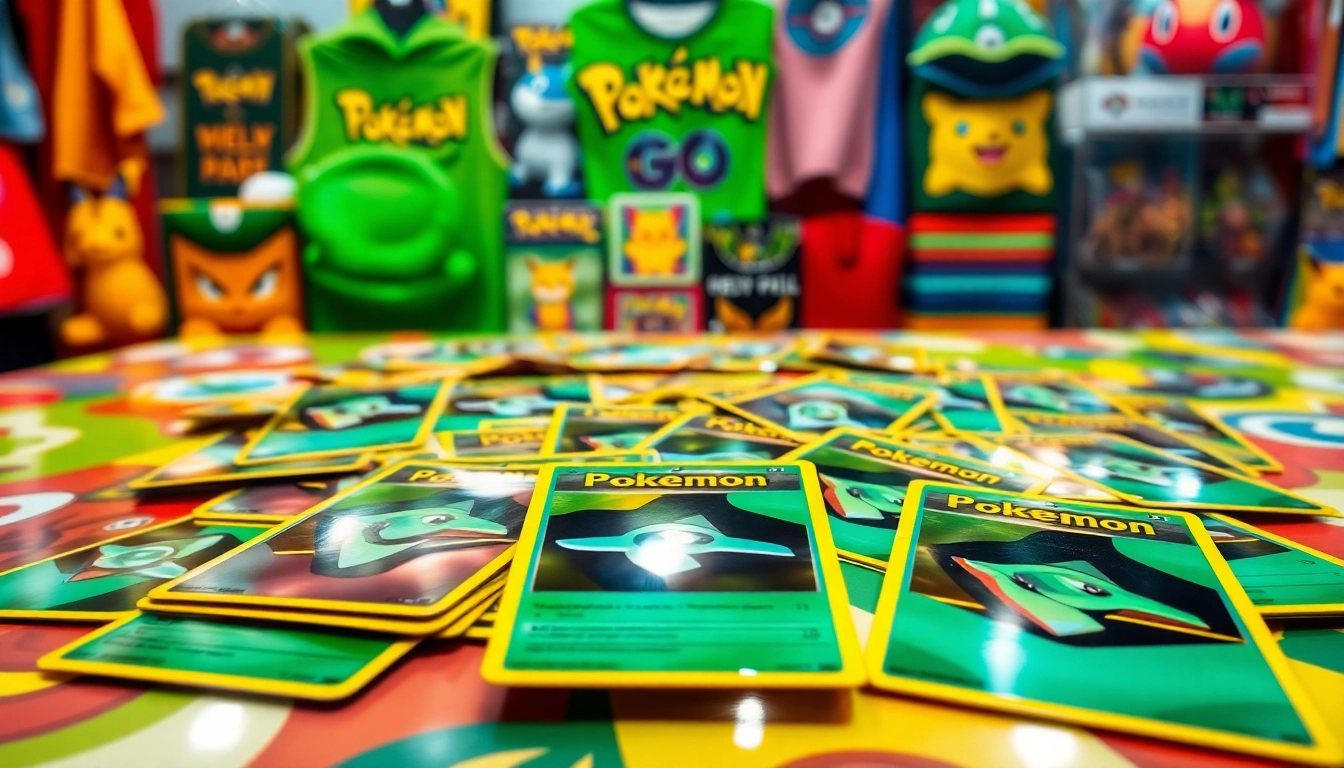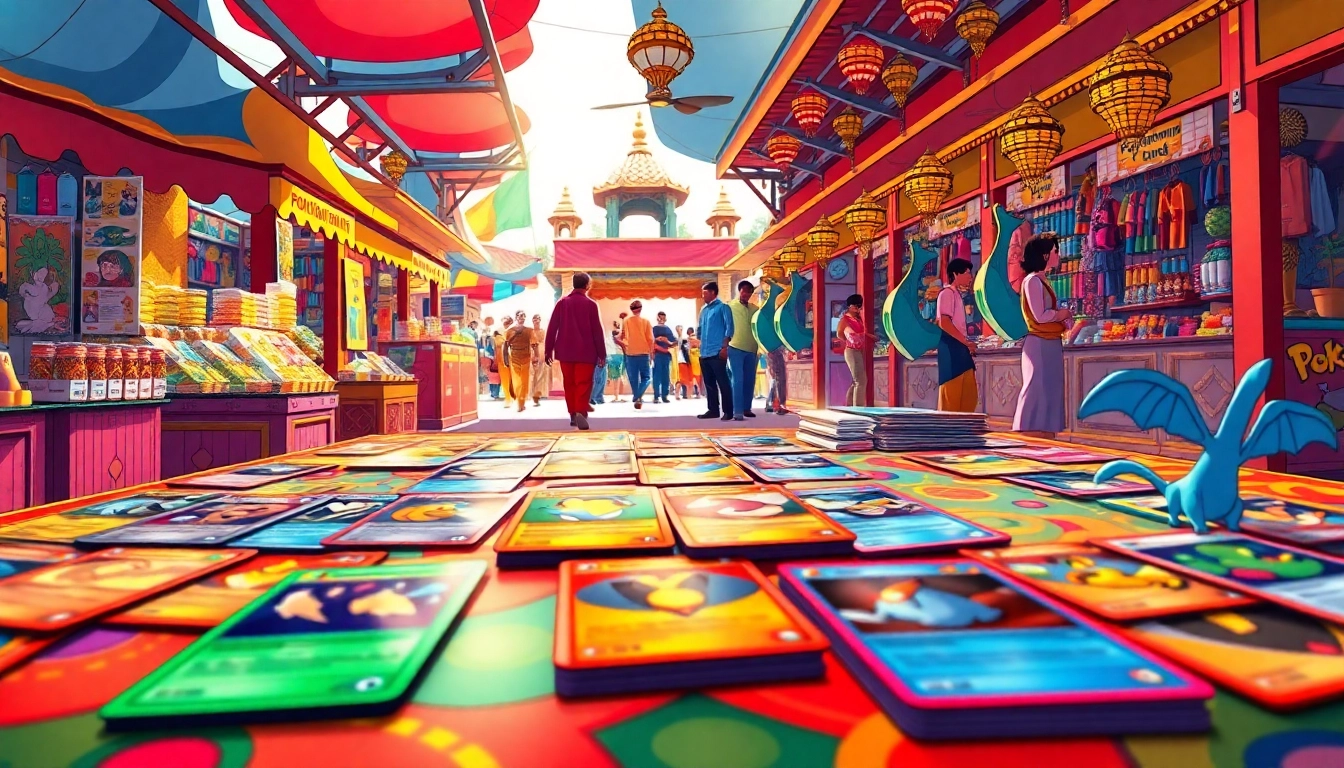Understanding Real Pokémon Cards
In the world of collecting, few hobbies capture the imagination quite like collecting Pokémon cards. For enthusiasts, owning a collection of real Pokémon cards is more than just a passion; it’s a testament to their dedication to the franchise. However, as the popularity of Pokémon cards has soared, so too has the prevalence of counterfeit cards in the market. To navigate this landscape safely, it’s essential to understand what makes Pokémon cards authentic and how to recognize the gems that enhance your collection.
What Makes Cards Authentic?
Authenticity in Pokémon cards is determined by several key factors, including the quality of print and material, design features, and the history of the card edition. Real Pokémon cards are produced using a distinct printing process that includes a high-quality finish, vibrant colors, and a specific feel that is hard to replicate. Each card is designed with unique features that collectors should familiarize themselves with. For example, legitimate cards often include:
- Holographic Effects: Real Pokémon cards possess distinct holographic elements that shift in color when viewed from different angles.
- Correct Font and Font Size: Official cards have specific font styles that match the established Pokémon trademarks.
- Card Thickness: Real cards have a standardized thickness, which can often be felt when held.
- Print Lines and Borders: Genuine cards exhibit precise printing details, including clean lines and borders that do not bleed.
Recognizing Value and Rarity
Not all real Pokémon cards are created equal in terms of value. The worth of a card can be significantly affected by factors such as rarity, condition (graded cards often have more value), and demand among collectors. For instance, first-edition cards, especially holographic and mint-condition ones, can fetch thousands of dollars at auction. It is crucial for collectors to educate themselves about the cards they are interested in by researching:
- Rarity Symbols: Most Pokémon cards have a rarity symbol (circle for common, diamond for uncommon, and star for rare) which can greatly influence their value.
- Card Condition: Grading scales (like PSA grading) help determine how much a card is worth. Cards in pristine condition typically yield higher prices.
- Market Trends: Following market trends can help collectors understand when to buy or sell their cards, especially during Pokémon resurgence phases.
Common Myths about Real Pokémon Cards
As with any collectible, misconceptions abound regarding Pokémon cards, particularly concerning authenticity and value. Here are some myths debunked:
- Myth 1: All holographic cards are valuable.
Reality: While holographic cards can be desirable, their value depends on edition and condition. - Myth 2: The older the card, the more valuable it is.
Reality: Some older cards are not in demand due to their abundance or lack of significance. - Myth 3: Any card can be sold for a high price.
Reality: Only specific cards with rarity and condition are likely to command better prices in the market.
Buying Real Pokémon Cards Safely
When venturing into the market for real Pokémon cards, knowledge and caution are your best allies. Here’s how you can ensure that your purchasing experience is safe and fruitful. A good starting point for buyers is exploring various options online, such as Real pokemon cards available at trusted online retailers and marketplaces.
Trusted Retailers and Online Marketplaces
Utilizing reliable sources is crucial for avoiding scams and fake cards. Some renowned places to purchase real Pokémon cards include:
- Official Pokémon Center: As the official online hub for Pokémon products, the Pokémon Center guarantees authenticity.
- eBay: A viable option when buying from reputable sellers with verified ratings. Look out for authenticity guarantees and return policies.
- Local Game Shops: Many independent card shops offer authentic cards and often have knowledgeable staff who can help guide your purchases.
- Card Marketplaces: Websites like Cardmarket and TCGPlayer act as marketplaces where individuals can buy and sell cards safely.
How to Avoid Fakes and Scams
Preventing the purchase of counterfeit cards requires diligence. Here are effective strategies:
- Check Seller Reviews: Evaluate seller ratings and read customer reviews to gauge reliability.
- Request Additional Photos: Ask for high-resolution images to examine the card’s details closely.
- Be Aware of Prices: If a deal looks too good to be true, it most likely is. Significant price drops can be red flags.
- Use Secure Payment Methods: Always opt for payment platforms that provide buyer protection, ensuring peace of mind.
Best Practices for Online Purchases
Engaging in online transactions necessitates certain best practices to ensure the security of your purchases:
- Understand Return Policies: Check return policies before finalizing a purchase to understand your options in case the card is not as advertised.
- Document Transactions: Keep records of your purchases to refer back to in case of disputes.
- Talk to Other Collectors: Community involvement can lead to trusted leads for sellers and valuable advice on making safe purchases.
Spotting Fake Pokémon Cards
With the growth of the Pokémon trading card game, it’s vital for collectors to develop skills in identifying fake cards. Understanding the subtle differences between real and fake Pokémon cards will ensure that collectors protect their investments effectively.
Key Differences Between Real and Fake Cards
Identifying fake Pokémon cards involves scrutinizing particular features:
- Print Quality: The print quality on fake cards often differs significantly; colors may be less vibrant or poorly aligned.
- Card Texture: Real cards have a specific texture and feel that counters the cheap, smooth surfaces of many fakes.
- Light Test: When held up to a bright light, real cards will show a translucent material which is not the case with fakes.
Tools and Techniques for Verification
Utilizing tools and techniques for verifying card authenticity can be invaluable. Here are some methods:
- Magnifying Glass: Use a magnifying glass to inspect print details closely.
- Light Source Test: As mentioned, using a light source can help to distinguish genuine cards from fakes effectively.
- UV Light Testing: Some genuine Pokémon cards have specific patterns that only appear under ultraviolet light.
Community Insights on Authenticity
Engaging with the Pokémon community can provide insights that may not be readily available through other channels:
- Forums and Social Media Groups: Participating in online forums can expose you to tips from experienced collectors.
- Q&A Platforms: Websites like Reddit have communities where you can ask direct questions about specific cards.
- Collector Events: Attend local or national collector events to connect with experts who can provide firsthand verification advice.
Collecting Real Pokémon Cards
Starting a collection, maintaining it, and connecting with other collectors are integral parts of being a successful Pokémon card enthusiast. Properly managing these components enhances both enjoyment and value.
Starting Your Collection: Tips and Tricks
For newcomers, these tips can get you started in the world of Pokémon card collecting:
- Define Your Goals: Are you collecting for fun or investment? Your approach will guide your purchases.
- Stay Informed: Regularly follow Pokémon news, sets, and market trends to understand which cards are coming out.
- Start with Small Investments: Begin by purchasing low-cost cards before progressing to rarer pieces.
Organizing and Displaying Your Cards
Once you’ve started accumulating cards, organization is key to both protection and presentation. Consider these steps:
- Use Sleeves and Toploaders: Protect your cards from wear and tear by investing in quality protection gear.
- Sort by Set or Type: Create an organizational scheme that makes it easy for you to identify and showcase your collection.
- Display Effectively: Use display cases to show off your best cards while keeping them safe from dust and damage.
Connect with Other Collectors
Involving yourself with fellow enthusiasts can enhance your collection experience:
- Join Local Clubs or Groups: Many cities have clubs that host regular meetings for card enthusiasts.
- Participate in Trading Events: Look for local events where you can swap cards with others to expand your collection.
- Engage Online: Platforms like Instagram and Facebook are filled with card enthusiasts eager to share tips and trade cards.
Future of Real Pokémon Cards in the Market
The landscape of Pokémon card collecting is ever-changing, influenced by market trends and technological advancements. Understanding these shifts will help collectors stay ahead.
Trends in Pokémon Card Collecting
As with any collectible item, trends develop and fade over time. Current trends include:
- Digital Collectibles: The rise of NFTs may alter how card collecting is perceived, blending physical cards with their digital counterparts.
- Revival of Classic Sets: Recently, older sets have re-emerged in popularity, with renewed interest in first-generation Pokemon.
- Influencer Involvement: Social media influencers are shaping the market significantly, often driving the price and recognition of particular cards.
The Impact of Technology on Card Authenticity
Advancements in technology have greatly affected how collectors verify authenticity:
- Blockchain Technology: Utilizing blockchain for card transactions may ensure authenticity and ownership history tracking.
- AI Verification: Some companies are developing AI tools to detect fake cards based on printing quality and design data.
- Online Marketplaces: Enhanced algorithms on platforms ensure better authentication processes for transactions.
Join the Pokémon Community: Events and Forums
Participation in community events, from tournaments to trade shows, can be immensely beneficial for collectors:
- Attend Tournaments: Competing or watching competitive play can provide collectors with unique insights on card use and value.
- Engage in Local Events: Look for local Pokémon events which may host market stalls dedicated to card trading.
- Utilize Online Forums: These platforms serve as excellent resources for learning about not just the cards, but also the community itself.
In conclusion, the journey of collecting real Pokémon cards is a rewarding endeavor filled with learning and community. By understanding authenticity, employing safe buying practices, and engaging with fellow enthusiasts, you can build a robust collection that not only brings joy but may also appreciate in value over time.



